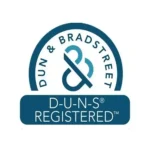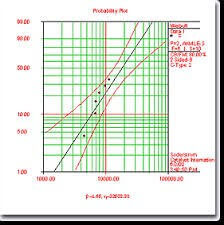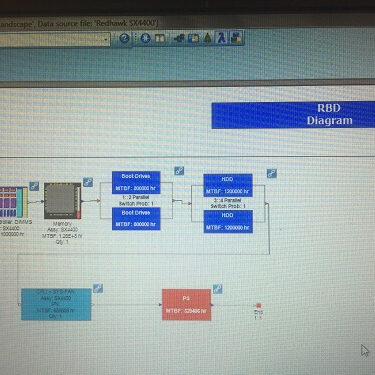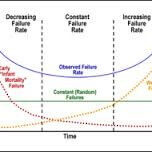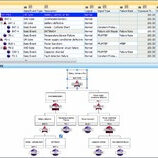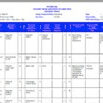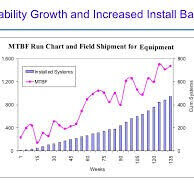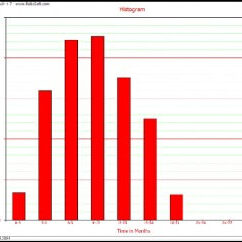Reliability Engineering Solutions

Relteck will provide Reliability Engineering services or reliable engineering consulting services and assessment testing to help you undertake product reliability improvement initiatives in business and operations. Relteck engineers will help you align your company business operations with your customer expectations and deploy industry best practices, statistical and reliability methodologies such as highly accelerated stress screening¸ life testing and reliability, highly accelerated life test and lifetime testing.
Relteck will create and execute reliability product technology testing program using the latest accelerated reliability test methods to predict reliability, Failure Analysis, HALT / HASS, into your product development product life cycle. Relteck provides reliability MTBF and System Availability analysis and reliability in assessment and accelerated life test that will satisfy the customer requirements of various standards. Supply the technical experience required to introduce Design for Reliability, MTBF Prediction, FMEA, RBD Modeling, Reliability Test Plan Development, Life Data Analysis (Weibull Analysis), Engineering and Test Data Analysis, Accelerated Life Testing Data Analysis, Confidence Limits, Data Mining and Supplier Reliability Assessments.
Relteck bring reliability engineering expertise and resources together in a flexible and customized way to improve your organization's ability to produce reliable products. Relteck provides your company with a fast, cost effective reliability analysis and testing services to help you meet your reliability goals for maximum system and components effectiveness.
Reliability Plan Development
Before jumping in at the deep end it pays to take an holistic view of your product life-cycle. What exactly are your goals for this product, architecture or system? Reliability Test Planning, and reliability planning in general are conducted to formalise design, production, and field reliability requirements to ensure everyone on your team understands the driving force behind your reliability development.
In order to develop a reliability test plan we’ll work with you to determine some key market requirements. Questions that need answering include:
- Where is the product going?
- How long is the design expected to last?
- How long does your warranty need to be?
- What do your competitors achieve?
- Are you a market leader, follower, or are you designing on the bleeding edge?
- What is your design history like?
- Do you currently have field & production data to determine real failure rates of existing models?
- Under which foreseeable environments will your product need to operate?
And therefore, which stresses is it likely to encounter?
What is sample availability for testing like?And so on. The answers to these key questions will essentially form requirements that shall be implemented and tested during product development, manufacturing and field use.
Failure Mode Effect Analysis (FMEA)
FMEA is a systematic analysis of identifying potential failure modes aimed at preventing failures. This is intended to be a preventative action process carried out before implementing new or changes in products design or processes. An effective FMEA identifies corrective actions required to prevent failures from reaching the customer and to assure the highest possible yield, quality and reliability.
In semiconductor device design and manufacturing, it is common to perform different types of FMEA. These can be divided into two primary categories: product related and process related. These are often called Design FMEA and Process FMEA and they are often further subdivided to focus on specific areas of product or process development. The main purpose of an FMEA is: To identify possible failure modes that could occur in the design or manufacturing of a product.
- To identify corrective actions that could reduce or eliminate the potential for failures to occur.
- To provide documentation of the process.
- To quantify the risk level associated with each potential failure mode.
An FMEA is a two-phase process. First the potential failure modes and corrective actions are identified. Then after the corrective actions are implemented, the product or process is re-evaluated to determine if the result is acceptable. This is best accomplished with a cross-functional team with members from all affected work groups (e.g. Marketing, Engineering, Manufacturing, Test, QRA, etc.). An FMEA is a living document that should be reviewed and updated periodically. Any change in design, process or use of the product should be updated in the FMEA
Fault Tree Analysis (FTA)
Fault Tree Analysis (FTA) is another technique for reliability and safety analysis. Bell Telephone Laboratories developed the concept in 1962 for the US Air Force for use with the Minuteman system. It was later adopted and extensively applied by the Boeing Company. Fault tree analysis is one of many symbolic "analytical logic techniques" found in operations research and in system reliability
In applications where reliability and safety are paramount, Relteck Engineer uses Windchill Quality Solution Fault Tree Analysis (FTA) software to provide the ability to focus on a top-level event, such as a safety issue or a critical failure, so you can mitigate its occurrence or impact. Intuitive graphical diagramming combined with powerful analytical tools allow you to easily define the critical failure, its contributing events, and their logical relationships to produce a powerful mathematical model of even the most complex systems. Windchill FTA also supports Event Tree construction to model the likelihood of downstream consequences.
Relteck engineer uses Windchill quality solution (FTA) software to supports both quantitative and qualitative analyses, providing flexibility based on requirements. A number of calculated results are available, with user options for the calculation method employed. Windchill FTA incorporates a Minimal Cut Set (MCS) engine that quickly determines the minimal cut sets and supports interactive, on-screen cut set highlighting. Incorporate common cause failures using the Beta, MGL, Alpha or BFR models and calculate Reliability Importance measures using Birnbaum, Criticality, or Fussell-Vesely methods.
Reliability Block Diagram Modeling (RBD)
Relteck Engineer uses Relex (Windchill) Reliability Block Diagram (RBD) software techniques to analyze the reliability metrics of complex redundant systems and product, computer networks and large scale systems. By providing support for redundant configurations and other real-world scenarios, RBDs enable you to accurately evaluate your true system metrics. RBD is a complete, fully-featured graphical reliability block diagram software evaluator. After constructing your system model onscreen, RBD’s sophisticated calculation engine does the rest—providing fast, accurate reliability and maintainability results. Relteck Engineer uses Relex RBD software to perform a wide range of calculations: availability, reliability, unavailability, MTBF, failure rate, expected number of failures, mean unavailability, total downtime, failure frequency, and hazard rate. RBD is a powerful tool for reliability and availability modeling that continues to be the choice of reliability engineering professionals.
Supplier's Reliability/Quality Assessments (SRA)
Initial and periodic official qualification assessments are scheduled and conducted at the supplier's during product development and to manufacturing facilities by the Purchasing and Supplier Quality Engineer and engineering representatives. These assessments are designed to evaluate the capability of the supplier's operations and quality system and to predict anticipated performance levels of product quality and delivery in the production phase. Assessment results are used in our supplier selection process, or, if the supplier was previously selected, the assessment alerts Purchasing, Quality and Supplier Quality Engineer to areas targeted for supplier improvement.
Life Data Analysis (Weibull & ALTA Analysis)
In life data analysis, the goal is to model and understand the failure rate behavior of a particular item, process or product. The models are built by taking the observed “life” data, which can be obtained either from the field or from in-house testing. Because time is a common measure of product life, the life data points are often called times-to-failure data. There are two general types of times-to-failure data: complete and censored.
Life Data Analysis provides a means to gauge the effect of field stress on product life, and there really is no data like real data. With this information in hand you can accurately produce accelerated tests for the next product undergoing development, or you could use the lessons provided by the data to correct design or manufacturing processes that are causing issues in the field. Life data analysis can provide huge benefits to companies in providing early-warning signals when there is a serious product problem in the field; which gives companies time to mobilize their resources to meet the challenge before serious financial, legal or other problems occur
Weibull techniques enable you to examine any type of failure data you have collected. You can use Weibull tools to effectively analyze all types of system life data, including mechanical, chemical, electronic, material, and even human failure data. You can then use your real-world field data to predict trends and analyze your system reliability. Weibull software provides full Weibull analysis capabilities in a powerful statistical tool wrapped in a friendly and flexible user interface. Weibull software has a broad range of applications and can be applied to any industry or process with ease. It moves the complexity of the statistical methodology into a powerful behind-the-scenes engine, allowing you to more accurately and efficiently analyze your life data.
Data Mining
Data analysis is the process of looking at and summarizing data with the intent to extract useful information and develop conclusions. Data analysis is closely related to Data mining, but data mining tends to focus on larger data sets, with less emphasis on making inference, and often uses data that was originally collected for a different purpose.
Predictive analytics encompasses a variety of techniques from statistics and data mining that analyze current and historical data to make predictions about future events. Such predictions rarely take the form of absolute statements, and are more likely to be expressed as values that correspond to the odds of a particular event or behavior taking place in the future.
Relteck Engineers will help your company summarize data to make it easy for management to understand and help make decision where to allocate resources and effort to improve process, product and customer satisfaction. Relteck Engineers will help your company develop metric that can be track on regular and periodic basis.

